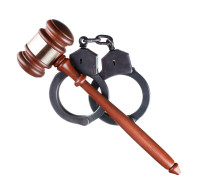 Application of the Alabama Criminal Sentencing Guidelines
Application of the Alabama Criminal Sentencing Guidelines
The Alabama Criminal Sentencing Guidelines are nothing new. The Federal Courts have used sentencing guidelines for years. Many other states use sentencing guidelines. Sentencing guidelines can be complicated. Knowing how to make the guidelines work for you can make big differences in your sentence. You need the counsel and advise of an experienced Alabama criminal defense attorney to navigate the complicated guidelines and obtain the best possible results for you. The attorneys at Bradford Ladner LLP understand the Alabama Criminal Sentencing Guidelines and can help ensure that you are sentenced fairly.
History of the Alabama Sentencing Commission and the Alabama Criminal Sentencing Guidelines
The beginnings of the Alabama Criminal Sentencing Guidelines is rooted in the creation of a special committee in 1998 to study sentencing policies and practices in Alabama. The committee was charged with identifying and studying the strengths and weaknesses of Alabama’s entire criminal sentencing system.
As a result of their study, committee recommended the creation of the Alabama Sentencing Commission as a separate state agency to serve as a permanent research arm of the criminal justice system. The Commission would be responsible for acquiring, analyzing and reporting necessary information to officials and state agencies involved in the sentencing process and making specific recommendations to reform Alabama’s criminal justice system, with primary emphasis on establishing truth-in-sentencing and eliminating unwarranted sentencing disparity.
Creation of the Alabama Sentencing Commission
Based on the committee’s recommendation, the Alabama Legislature passed Act 2000-596, effective May 17, 2000, creating a permanent Sentencing Commission as a separate state agency under the Alabama Supreme Court. The law makes the Commission responsible for the following things: (1) to serve as a clearinghouse for the collection, preparation, and dissemination of information on sentencing practices; (2) to make recommendations to the Governor, Legislature, Attorney General, and Judicial Study Commission concerning criminal laws, sentencing in criminal cases, corrections and probation, and (3) to review the overcrowding problem in county jails and to make recommendations for resolution of jail overcrowding to the Governor, Legislature, Attorney General, and the Judicial System Study Commission.
Creation of the Alabama Criminal Sentencing Guidelines
In 2000, the Alabama Legislature instructed the Alabama Sentencing Commission to review Alabama’s existing sentence structure, and to recommend to the Legislature and Supreme Court changes in the criminal code, criminal procedures, and other aspects of sentencing policies and practices. The Legislature directed the Alabama Sentencing Commission to evaluate Alabama’s criminal sentencing in relation to the need to promote public safety and to recognize the impact of crime on victims by concentrating on the incarceration of violent, sex, and repeat offenders. In doing so, the Commission was also instructed to maintain meaningful judicial discretion allowing judges the flexibility to individualize sentences based on the unique circumstances of each case.
The result was the Alabama Criminal Sentencing Guidelines. The Guidelines were considered voluntary when they were first established. However, in 2012, the Legislature ordered the Alabama Sentencing Commission to make the Alabama Criminal Sentencing Guidelines “presumptive” in relation to non-violent criminal offenses. This means that the sentence calculated under the Sentencing Guidelines will be presumed to be the correct sentence. Only where there are special circumstances can the trial court sentence a non-violent offender either higher or lower than the sentence calculated under the Alabama Criminal Sentencing Guidelines. The non-violent offender guidelines are to go into effect on October 1, 2013.
MORE INFORMATION ON:
- WHAT ARE VIOLENT OFFENSES?
- WHAT ARE NON-VIOLENT OFFENSES?
- WHEN CAN A JUDGE GO ABOVE OR BELOW THE RECOMMENDED SENTENCE?



























